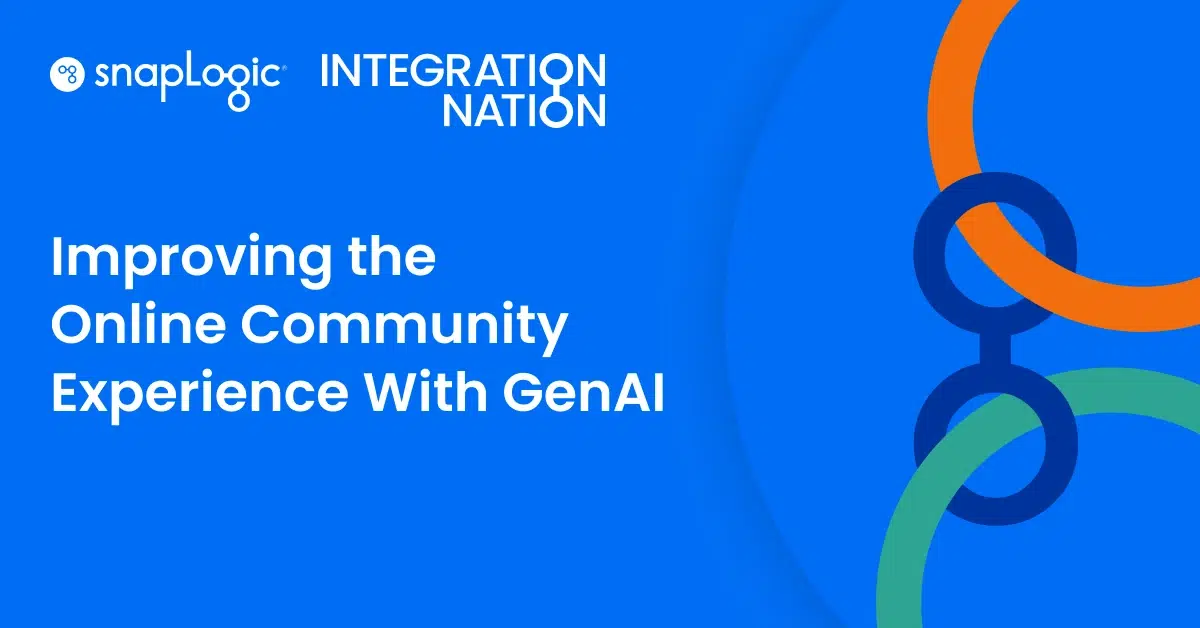In the ever-evolving world of cloud integration, change is the only constant. Previously, we’ve discussed five signs indicating that your business might need a more robust cloud integration strategy. These signs include the integrator’s dilemma, swivel chair integration, and the contemplation of reverting to on-premise solutions due to diminishing SaaS returns. In response to these challenges, we’ve designed the SnapLogic Elastic Integration Platform. This solution not only meets your integration requirements but also enhances your cloud integration strategy.
7 Key Features of SnapLogic’s Elastic Integration Platform
1. Unified Data Handling
Firstly, the SnapLogic Elastic Integration Platform stands out with its ability to manage both structured and unstructured data. Our Snap endpoints consume hierarchical data in its native format and then pass it on to downstream Snaps in a pipeline. This process eliminates the need to flatten data into records or convert a JSON document into a string or BLOB type.
2. Advanced App and Data Integration
Secondly, our platform is ready to handle your data integration needs. Whether they involve streaming or batch applications, we’ve got you covered. As Loraine Lawson aptly put it, trying to put a JSON format on a traditional, XML-based ESB is like making a silk purse out of a sow’s ear.
3. Beyond Point-to-Point Integration
Thirdly, SnapLogic goes beyond the limitations of point-to-point cloud integration. Our platform uses a hub and spoke integration architecture. This approach allows customers to integrate complex apps both in the cloud and on-premises incrementally and cost-effectively, without manual coding or re-work.
4. Hybrid Integration Use Cases
As SaaS adoption grows and gains broader acceptance in IT organizations, enterprises need modern integration processes. They need solutions that cater to different scenarios. These scenarios include cloud-to-cloud, cloud-to-ground, ground-to-ground, and hybrid (cloud-to-cloud and ground).
5. Multi-Tenant, Software-Defined Cloud Service
Fifthly, the SnapLogic Elastic Integration Platform builds on the principles of software-defined networking (SDN). The “control plane” decides where and how data is processed based on user configuration and preferences. Meanwhile, the “data plane” (aka the Snaplex) processes the data as per instructions from the control plane. You can learn more about our software-defined integration here.
6. Elastic Scaling
Next, a modern iPaaS architecture requires elastic scale capabilities. SnapLogic includes built-in intelligence to automatically scale the Snaplex out and in to handle variable traffic loads.
7. User Experience for Citizen Integrators
Lastly, our Summer 2014 release refined and improved the HTML5, cloud-based user interface. It’s designed for both advanced users and “citizen integrators” who need maximum ease of use and self-service. As our UX team says about designing the SnapLogic Elastic Integration Platform, “We didn’t just round the corners of an icon – we rethought and rebuilt the technology.”
New Developments from SnapLogic: Leading the Generative Integration Movement
SnapLogic, the leader in generative integration, continues to innovate its platform. A key advancement is the provision of a unified view of a customer 360. This is achieved by integrating all disparate data sources using the SnapLogic iPaaS infrastructure. This process is part of our mission to empower everyone to integrate faster, easier, and more cost-effectively.
Experience SnapLogic in Action: The Leader in Generative Integration [2023]
SnapLogic is more than a platform; it’s a leader in generative integration. The SnapLogic Platform accelerates digital transformation across the enterprise. It simplifies your technology stack and takes your enterprise further.
Experience the power of SnapLogic’s Platform for yourself. Request a demo today and see how SnapLogic can transform your cloud integration strategy. Discover the benefits of modern iPaaS architecture and how it can meet your integration needs.











